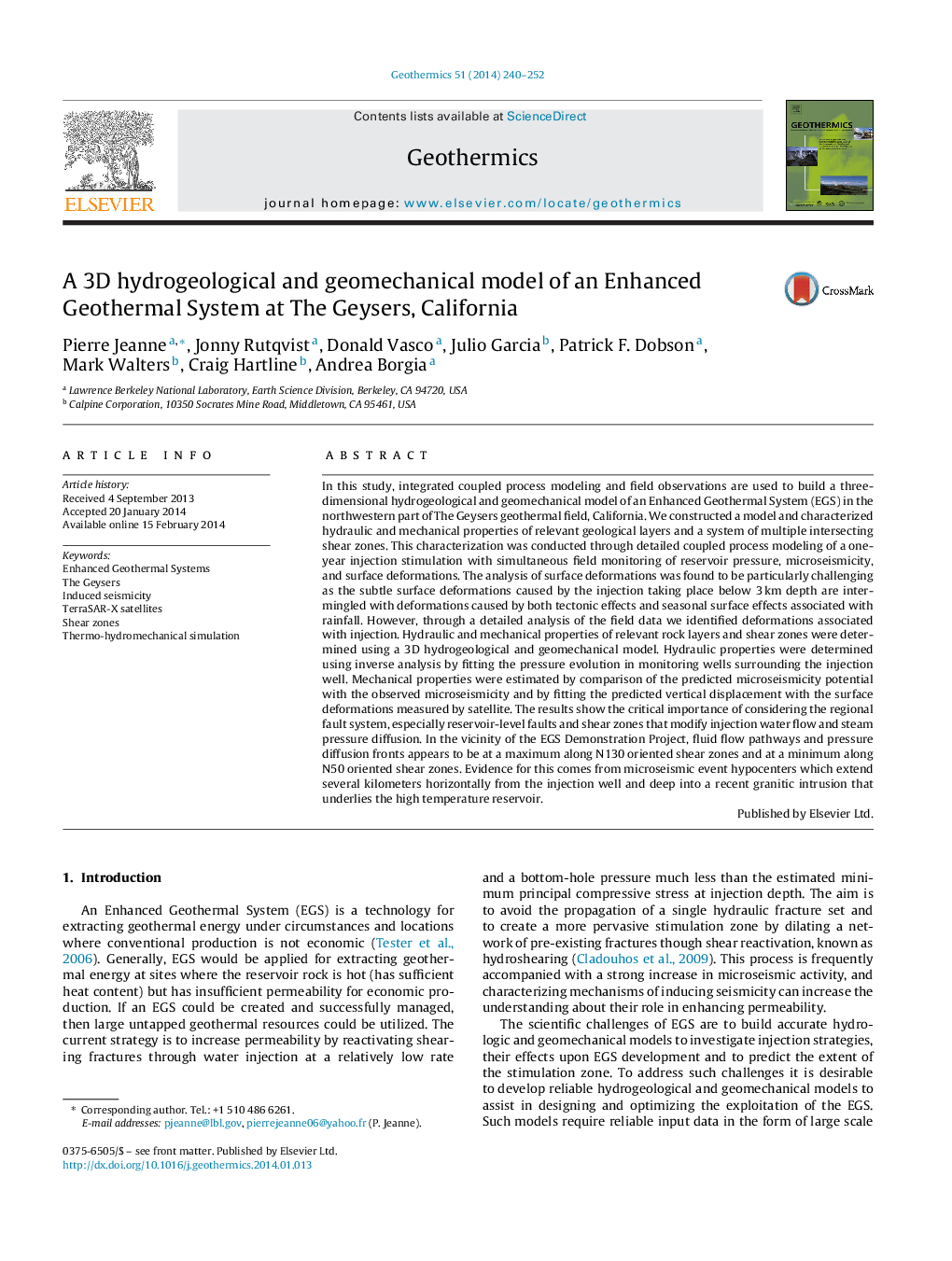| کد مقاله | کد نشریه | سال انتشار | مقاله انگلیسی | نسخه تمام متن |
|---|---|---|---|---|
| 1742388 | 1521917 | 2014 | 13 صفحه PDF | دانلود رایگان |

• Coupled analyses of the microseismicity and the ground surface deformations.
• Hydraulic properties determined by matching the monitored well pressure variations.
• To build a reliable 3D hydrological and geomechanical model of the EGS.
• The main cause of inducing MEQ is related to injection-induced pressure increase.
• MEQ distribution is strongly influenced by the regional geological setting.
In this study, integrated coupled process modeling and field observations are used to build a three-dimensional hydrogeological and geomechanical model of an Enhanced Geothermal System (EGS) in the northwestern part of The Geysers geothermal field, California. We constructed a model and characterized hydraulic and mechanical properties of relevant geological layers and a system of multiple intersecting shear zones. This characterization was conducted through detailed coupled process modeling of a one-year injection stimulation with simultaneous field monitoring of reservoir pressure, microseismicity, and surface deformations. The analysis of surface deformations was found to be particularly challenging as the subtle surface deformations caused by the injection taking place below 3 km depth are intermingled with deformations caused by both tectonic effects and seasonal surface effects associated with rainfall. However, through a detailed analysis of the field data we identified deformations associated with injection. Hydraulic and mechanical properties of relevant rock layers and shear zones were determined using a 3D hydrogeological and geomechanical model. Hydraulic properties were determined using inverse analysis by fitting the pressure evolution in monitoring wells surrounding the injection well. Mechanical properties were estimated by comparison of the predicted microseismicity potential with the observed microseismicity and by fitting the predicted vertical displacement with the surface deformations measured by satellite. The results show the critical importance of considering the regional fault system, especially reservoir-level faults and shear zones that modify injection water flow and steam pressure diffusion. In the vicinity of the EGS Demonstration Project, fluid flow pathways and pressure diffusion fronts appears to be at a maximum along N130 oriented shear zones and at a minimum along N50 oriented shear zones. Evidence for this comes from microseismic event hypocenters which extend several kilometers horizontally from the injection well and deep into a recent granitic intrusion that underlies the high temperature reservoir.
Journal: Geothermics - Volume 51, July 2014, Pages 240–252